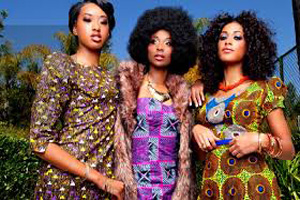
Redefinition of African fashion opens doors to internationalization and recognition
YarnsandFibers News Bureau 2014-05-09 08:30:00 – AfricaAfrican fashion has taken a dramatically change in the past few years. Wearing African-designed clothes is now seen as a sign of the times. It’s fashionable and brings to light a high social status which was earlier linked to rural living or with poverty.
Africans are now becoming more and more identified with their local brands. Celebrities and government figures are seen wearing local brands, according to Lilly Alfonso, a leading fashion designer from Malawi.
For the first time since the 1980s, Africans all over the world have proudly accepted and included their own fashion culture in their daily life said Ablan Joyce Nouaho, managing director of Legendary Gold Limited and organizer of the Africa Fashion Reception and Nigeria Fashion Week.
Earlier, there was no stage for the African fashion designers to showcase their pieces. Now fashion events are burgeoning in the main cities of the continent: South Africa’s fashion week in Johannesburg finished on April 8, a fashion weekend is coming up on May 17 and 18 in the Nigerian capital of Lagos, and later the Africa Fashion Reception has been scheduled for July 3–5 in Abuja, Nigeria.
Younger generation of talented African designers has accepted innovative method to using different cuts on African fabrics. The redefinition of African fashion opened doors to internationalization and recognition. African fashion is known for its exuberant colors, while Western fashion is famous for its clear cuts and limited nuisances.
The latest collections of H&M, Givenchy, Tory Burch, Stella McCartney, Burberry Prorsum, and Anna Sui, just to name a few, feature African prints, vibrant colors, beads and metal plates.
There is a renaissance taking place in African fashion. New technologies have also contributed to the rise of the African fashion industry. This revolutionalization in the textile and fashion industry is slowly turning Africa to an attractive investment destination.
According to Fashion United, the international fashion industry network, clothing and textiles are among of the world’s largest industries. The global apparel market was valued at $1.7 trillion in 2012, employing 75 million people,
If African governments were to throw their support behind the fashion industry, the possibilities would be enormous. Poverty, global trade, and lack of marketing for large-scale distribution hinder the development and production of Africa fashion.
Exposure is the biggest challenge for African designers, there is a need for a council to take charge and opening the doors to fashion world. For an African designer to be known abroad and be invited to share the runways is the biggest achievement
Another big issue is the lack of quality textiles. Although cotton is the second largest exported product in Tanzania, there isn’t any cotton manufacturing industry in the country. As a result, raw cotton is harvested in Tanzania but then exported to other countries to be processed into fabrics, mostly to China, which is then imported back at three times the cost.
Africa needs to invest in education, textile processing factories, technological developments in fashion production, and promote talent to support the fashion industry and in turn, the economy.
Market Intelligence
Ask for free sample Report

experience
Customer Base
dedicated team
Countries Served Worldwide









